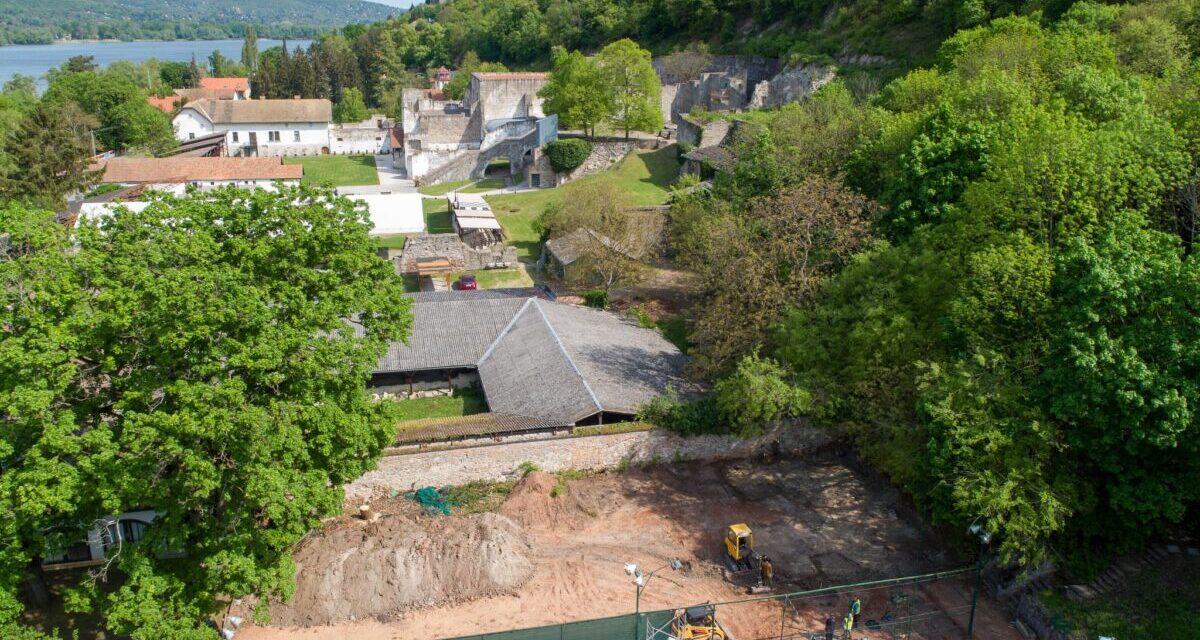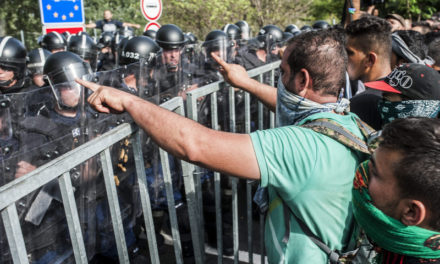The ruins of the Church of the Virgin Mary, built during the reign of King Sigismund, were discovered during the archaeological excavations prior to the rebirth of the Visegrád monument complex.
In the area of the crypt in front of the excavated high altar, not only were pieces of the collapsed Late Gothic vault of the sanctuary brought to the surface, but also traces of a clash hundreds of years ago were found, the Castle Administration announced on Thursday.
As a result of the Visegrád Renaissance, a development program aimed at the renewal of the Visegrád castle and its surroundings, launched in 2021, the castle system and the royal palace will be reborn in accordance with the conditions of the time of Matthias.
The reconstruction will be preceded by the removal of invasive vegetation dangerous to the walls and the survey carried out by 3D laser scanning, along with archaeological excavations. Last year, a pair of 700-year-old gilded clothespins was found near the former royal palace, the owner of which may have been the spouse of Queen Elisabeth Piast, Károly I (Róbert), as the excavated building was presumably built for her house.
In March, the largest-scale research in the history of Visegrád continued, carried out by experts from the Hungarian National Museum's King Mátyás Museum and the National Institute of Archeology on behalf of the Castle Administration.
During the work, for the first time, traces of a settlement from the time of Turkish subjugation were found in the lower castle. They came out 16-17. century ceramics, sealed pipes and a set of silver related to women's cosmetics, as well as projectiles made of metal, leg irons, knives with bone handles, as well as medieval coins, Ottoman-Turkish coins, II. Matthias and II. Ferdinand's denarius. It is interesting that most of the buildings used by the Ottomans contained counterfeit coins, among which stands out a browned copy of a 17th century French silver Écu.
A presumably Turkish burial site and an oval-shaped oven with a collapsed vault were also discovered near the gate tower of the citadel. Based on the found material, these could have been created in the 1680s.
The excavation of the tennis court next to the royal palace, where the Franciscan monastery founded by King Sigismund once stood, proved to be the most promising for the archaeologists.
The remains of the church were found already on the first day, and then a crypt was found in front of the main altar, on which more than a hundred pieces of the late Gothic vault ribs of the sanctuary had collapsed.
Among the debris of the collapsed crypt lay the skeletal remains of three corpses. Based on the objects found next to them, such as a spur and several lead rifle bullets, they may have been soldiers. There was a copper bowl near them, which may have been used for defense, as its surface bears indentations made by weapons. According to archaeologists, this may indicate that the church may have been the scene not only of looting, but also of a bloody confrontation.
The crypt probably collapsed after 1544, when Visegrád fell into Ottoman-Turkish hands, thus burying the memories of the former wealth and destruction of the royal castle for centuries.
In the framework of the Visegrád Renaissance program, not only the lower castle and Solomon's tower, the valley wall and the water bastion will be reconstructed in the following years, but the Visegrád citadel and the royal palace will also be renovated. In addition to the cultural, infrastructural and tourist developments, the building complex will be made barrier-free and accessible on foot, and the lower and upper parts of the castle system will be connected. The works will be carried out in several stages, so that the citadel, the lower castle and a part of the royal palace can be visited even during the reconstruction.
MTI
Cover image: The former tennis court became the development area of the Visegrád Renaissance program, so work could begin
Source: Facebook/ MNM National Archaeological Institute, King Mátyás Museum













